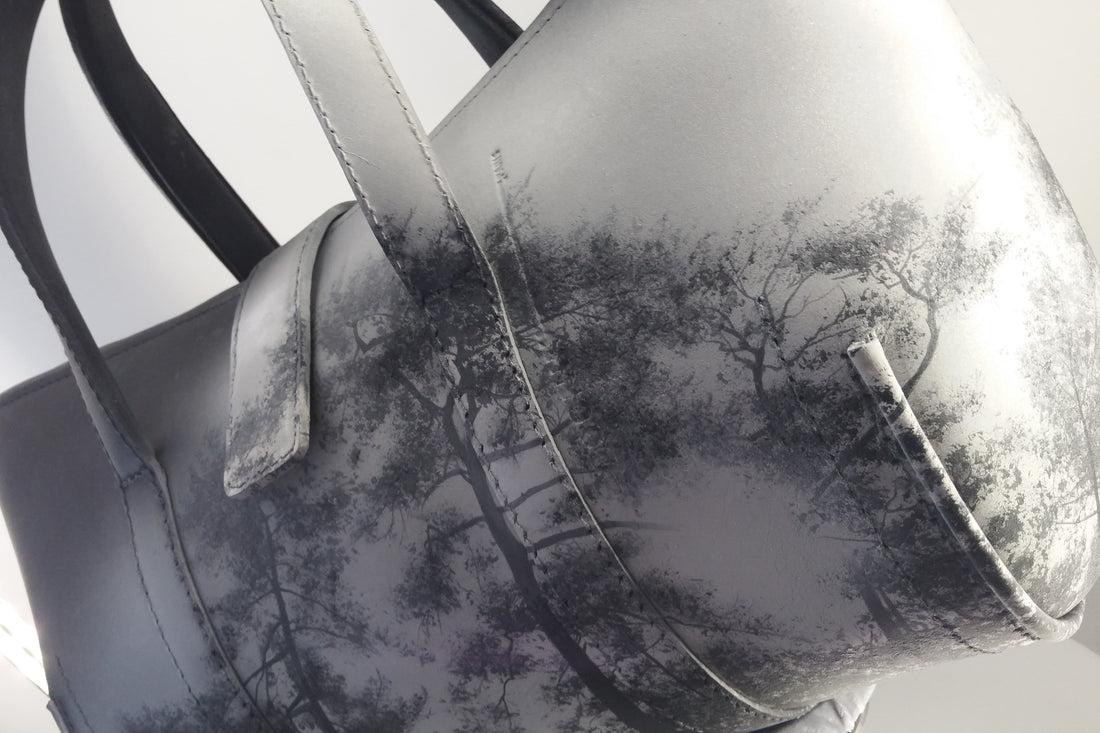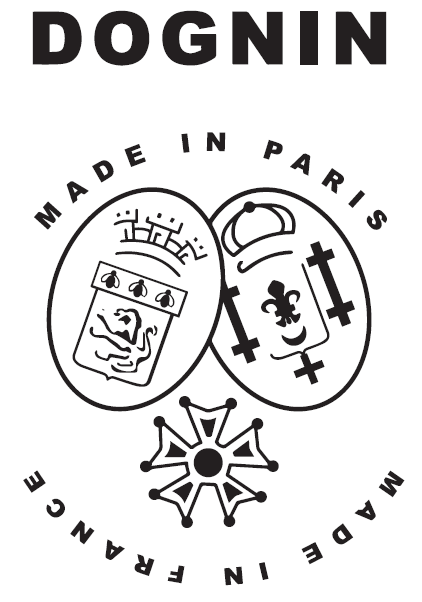
“Regards croisés sur le Polochon” (Exchange of perspectives on the Polochon)
Seeing landscape as nature again
We produced two exclusive models with the artist Akira Kugimachi. This painter who comes from Japan has developed a very singular technique based on pigments that he produces himself using natural materials.
He thus painted with mineral pigments (lapis-lazuli, coral, shell, marble and crystal), with hide glue, and India ink on the natural calf leather of the Polochon (“polochon” means “duffel bag”).
Nature questioned by light and infinity in an almost philosophical way is a subject emblematic of the artist’s work. On one of the models, reference is made to the 16th-Century painting Shorin-Zu (Pine Trees) by the Japanese Old Master Hasegawa. The other model makes reference to the forest of theChâteau de Chambord.
The Polochon is a hybrid bag, a cross between fashion, fine crafts, and design. It was made using exclusive know-how that has been patented: “flexible leather”. It was awarded the “Label de l’Observeur du Design” for the novelty of its shape.
The body of the Polochon was made from a single piece of leather and the method used made it possible to give it an uncommon volume, and a design with ovoid shapes with no sharp edges that inspired Akira Kugimachi for producing his painting.
A few words about Akira Kugimachi’s work.
Nature becomes landscape when it is seen from a distance through the prism of aesthetic interpretation. Thus, the landscape is always related to the vision of a human being who thinks about and analyses the world from the context that is specific to him or her, in particular in Western aesthetics since the 18th Century.
With Akira Kugimachi, our usual mode of representation is profoundly transformed: it is as if the artist has removed the distance from the viewer so as to be placed, and to place us, in amongst the elements. A more Oriental vision of things, which allows multiple viewpoints, and also a positioning that, in particular, is the opposite of that of a romantic landscape: enabling us to see original nature again, beyond the modern representation of it.
His work to find particular materials for developing his pigments (stone, shells, marble, etc.) is part of this will to go back to a permanent presence of the elements making up the landscape, through a dual movement involving both penetration of the materiality of the elements and also abstract representation of the shapes.
Light is no longer something that illuminates nature from a single viewpoint. Akira Kugimachi seems to have rediscovered landscape as a sensorial function that connects the human being to the outside world through it: it is the light that makes the landscape, and the painting itself.
“Akira Kugimachi’s works are like an explosion of light into infinite parts in a black and infinite space, playing over and again unceasingly the affinity of matter with life.”
Sally Bonn
• Closed with a magnetic strap
• Inside: a zip pocket
POL1: Width 45 cm – Height 26 cm – Depth 18 cm
